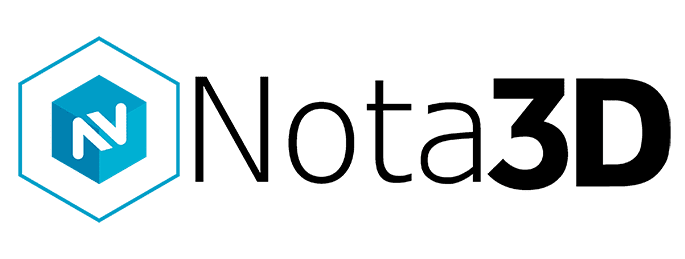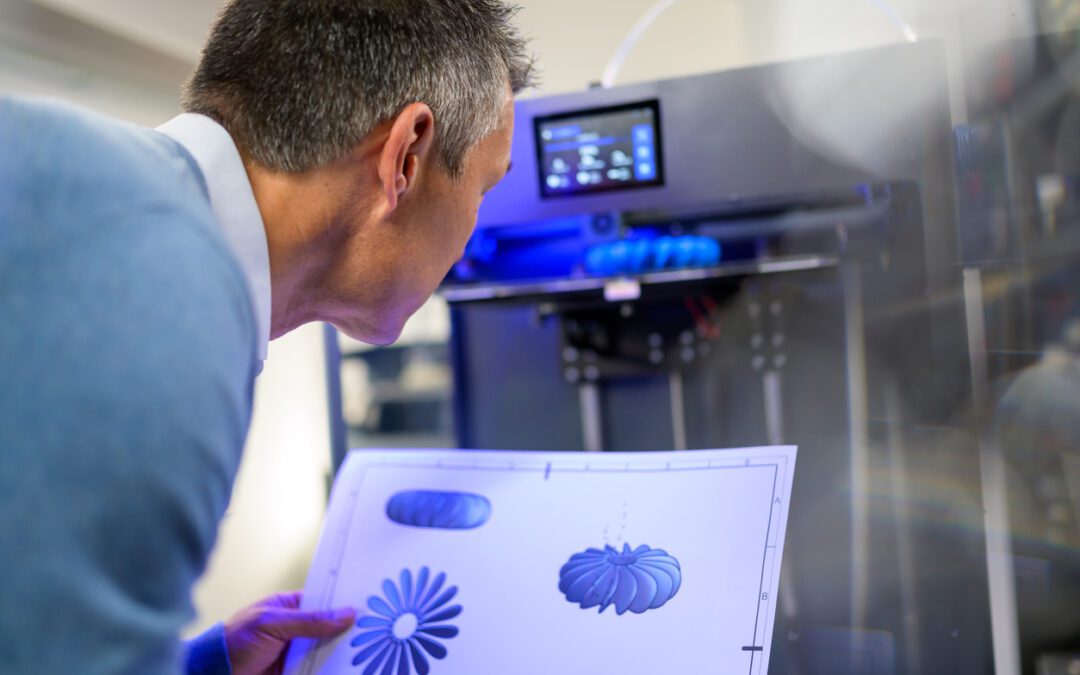The Seamless Integration of 3D Printing in Supply Chain Optimization
The integration of cutting-edge technologies in the industrial manufacturing industry is revolutionizing conventional practices. Among these transformative innovations, 3D printing stands out as a pioneering force. While initially recognized for its utility in rapid prototyping and innovative product development, 3D printing is now demonstrating remarkable potential in the optimization and enhancement of supply chain operations. This technology enables manufacturers to produce components on-demand, reducing lead times and minimizing inventory stockpiles.
By facilitating decentralized manufacturing and customization at scale, 3D printing fosters agility within supply chains, allowing for swift adaptations to market demands and fluctuations. Moreover, its ability to create intricate geometries and lightweight structures enhances product performance while minimizing material waste. This blog will delve into the transformative impact of 3D printing on industrial manufacturing supply chains, exploring how it is enhancing efficiency, reducing costs, and fostering a new era of agile production.
1. On-Demand Production
Traditional manufacturing processes typically follow a model characterized by prolonged lead times and the production of large batches of items. This approach often necessitates forecasting demand far in advance and producing items in bulk, leading to challenges such as excess inventory and the potential for overproduction. However, with the advent of 3D printing technology, manufacturers are empowered to transition towards on-demand production models, thereby addressing these longstanding issues. Unlike conventional methods, 3D printing enables the creation of components and products in real-time, responding swiftly to customer needs and market fluctuations.
By producing items on-demand, manufacturers can significantly reduce the requirement for extensive warehousing infrastructure, as well as mitigate the risks associated with maintaining large inventories. Moreover, the flexibility offered by 3D printing allows for the efficient customization of products without incurring substantial additional costs or delays. This shift towards on-demand manufacturing not only enhances operational efficiency but also fosters a more sustainable approach to production by minimizing waste and optimizing resource utilization. As a result, 3D printing represents a paradigm shift in manufacturing, offering manufacturers the opportunity to embrace leaner, more responsive production processes tailored to the demands of the modern market.
2. Reducing Inventory Costs
The financial burden of maintaining substantial inventories can pose a significant challenge for manufacturers. However, the advent of 3D printing technology presents a transformative solution by facilitating a leaner approach to inventory management. This lean inventory model offers several compelling benefits for manufacturers. It reduces carrying costs associated with storing excess inventory, including expenses related to storage facilities, handling, and insurance. Additionally, by producing items on-demand, 3D printing mitigates the risks of inventory obsolescence, as manufacturers can swiftly adjust production to match current demand and market trends.
The adoption of 3D printing allows for a more efficient utilization of warehouse space, as the need for large storage areas to accommodate bulk inventory diminishes. Consequently, manufacturers can optimize their operational costs and resource allocation, thereby enhancing overall profitability and competitiveness in the market. Ultimately, by streamlining inventory management processes and reducing associated costs, 3D printing emerges as a pivotal tool in driving efficiency and sustainability within the industrial manufacturing sector.
3. Customization Without Complexity
As consumer preferences continue to evolve towards personalized and tailored products, traditional manufacturing methods face challenges in efficiently meeting these demands. Conventional approaches often require significant retooling and adjustments to accommodate customization, which can be time-consuming and costly. However, the emergence of 3D printing technology offers a streamlined solution to this dilemma. Unlike traditional methods, 3D printing allows for the production of highly customized components and products with minimal complexity and overhead.
By leveraging digital design files, manufacturers can rapidly adjust and modify product specifications to meet individual customer preferences without the need for extensive retooling or reconfiguration of production lines. This flexibility enables manufacturers to respond swiftly to changing market trends and consumer demands, offering a competitive edge in an increasingly dynamic marketplace. Moreover, 3D printing empowers customers to actively participate in the design process, fostering a deeper sense of engagement and satisfaction with the final product. As a result, 3D printing not only facilitates customization without complexity but also promotes innovation, creativity, and customer-centricity within the industrial manufacturing sector.
4. Supply Chain Cost Reduction
Cost efficiency stands as a paramount consideration for every manufacturing operation striving for competitiveness and sustainability. 3D printing technology has emerged as a game-changer, offering a multitude of avenues for cost reduction across the supply chain. One of the most notable areas of cost savings lies in reduced tooling expenses. Unlike traditional manufacturing methods that often necessitate the creation of specialized molds, dies, or fixtures, 3D printing bypasses the need for such costly tooling. Instead, products can be directly fabricated from digital designs, eliminating the upfront investment and lead time associated with traditional tooling processes.
3D printing facilitates localized production, enabling businesses to manufacture components and products closer to their end-users or distribution centers. This localization minimizes transportation expenses, including shipping costs and lead times, further contributing to overall cost reduction. Moreover, the versatility of 3D printing allows for the consolidation of multiple parts into single, complex assemblies, reducing material waste and assembly costs. By harnessing these financial benefits, businesses can achieve a competitive edge in the marketplace, optimizing their operational expenses and enhancing their bottom line.
5. Sustainable Manufacturing
Sustainability has become an increasingly prominent focal point, driven by growing environmental concerns and the imperative to adopt more responsible practices. Within this context, 3D printing technology emerges as a key enabler of environmentally friendly manufacturing processes. By its very nature, 3D printing minimizes material waste through its additive manufacturing approach, where products are built layer by layer using only the necessary amount of material. Unlike traditional subtractive manufacturing methods, which often generate significant waste in the form of excess material or scraps, 3D printing ensures optimal resource utilization and minimal material footprint.
3D printing technology offers the potential for significant reductions in energy consumption compared to conventional manufacturing processes. With its ability to produce complex geometries and lightweight structures, 3D printing enables the creation of more energy-efficient components and products. Additionally, the localized production capabilities of 3D printing contribute to lower energy requirements for transportation, further reducing the carbon footprint associated with logistics and distribution.
3D printing promotes the principles of a circular economy by facilitating the recycling and reuse of materials. Waste materials generated during the printing process can often be recycled and repurposed for future prints, minimizing the need for new resources and closing the loop on material consumption.
As industrial manufacturing embraces the digital era, 3D printing stands at the forefront of supply chain optimization. By enabling on-demand production, reducing inventory costs, enhancing supply chain resilience, accommodating customization, and contributing to sustainability goals, 3D printing is not just a technological innovation but a strategic asset. The transformative power of 3D printing in streamlining supply chain processes is not only optimizing operational efficiency but also positioning businesses for a more agile and sustainable future.
Meet Nota3D: Your Trusted Partner in 3D Printing Solutions
Nota3D comprises 3D printing enthusiasts with a cumulative industry experience exceeding 40 years. With diverse backgrounds spanning technical support, operations, applications, customer service, and sales, we offer comprehensive solutions tailored to the needs of the companies we serve.
Our commitment to you extends beyond mere transactions; we approach each interaction with a genuine curiosity and a dedication to understanding your unique processes—both current and future. We believe in offering recommendations only after gaining a thorough comprehension of your requirements. Should our evaluation suggest a solution outside our purview, we will transparently guide you towards it.
Our aspiration is to be recognized as a dependable partner, and this aspiration underscores our interactions. Hence, numerous esteemed companies across the nation rely on us to procure the most suitable tools for their needs. Our clientele ranges from ambitious garage inventors to prominent players in the global medical device industry, a testament to our versatility and commitment to excellence.
To find out more about how we can help contact us today.

